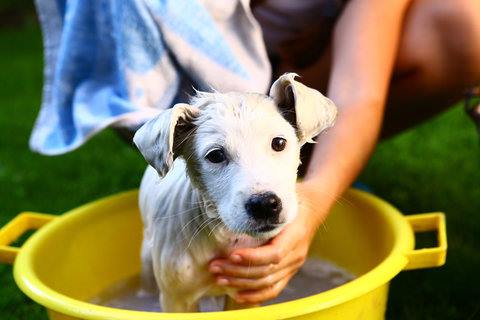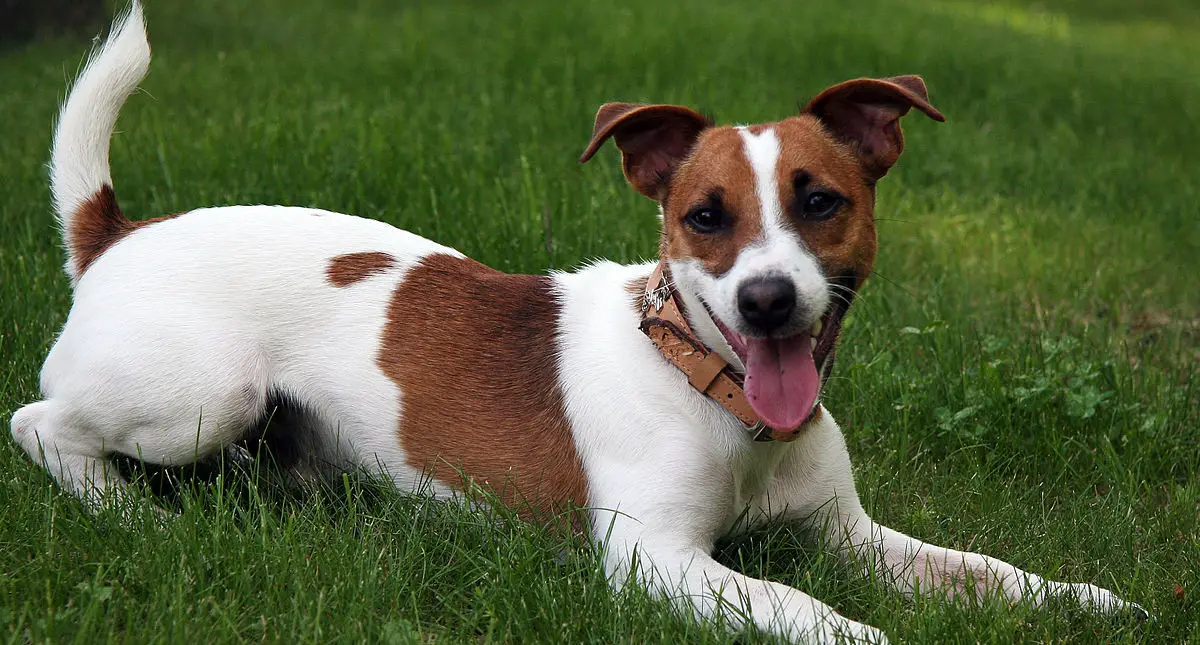Table of Contents
*This post may contain affiliate links. As an Amazon Associate we earn from qualifying purchases.
You might have heard the term “hot spots,” and wondered what it meant. It’s not, unfortunately, a fun place to spend an evening. In fact, when it comes to your dog, hot spots are one thing everyone wants to avoid.
What Are Hot Spots?

A hot spot is an area of heavily irritated skin. It often feels hot to the touch, and may also be red and angry looking. You may not see the spot at first. Rather, your pet may bring it to your attention by consistently licking, biting, or scratching at the same spot.
Many different kinds of pets can develop hot spots, although they’re more common in long-haired pets, especially in the summer and in times of high humidity.
What Causes Hot Spots?
There are three main causes of hot spots, although, as we know from our own experience, a variety of things can cause skin irritation. Each of these
Flea and insect bites
Fleas can cause hot spots in two different ways. First, flea bites may irritate the skin, causing your dog to scratch at it. If the scratch breaks the skin, bacteria can enter, causing the bite to become irritated, or even infected.
A second way fleas can cause hot spots is by triggering an allergic reaction. Many dogs are allergic to flea saliva, and this can cause the skin to become irritated as well.
In the case of fleas, the most common place for a hot spot to occur is near the tail, on the rump.

Allergies
Fleas aren’t the only thing that can cause an allergic dog to itch. Dogs can be allergic to a variety of things, just like people can. Just like with us, some allergens cause sneezing and watery eyes. Other allergens can cause dermatitis. If allergies are causing your dog to scratch they may also develop a hot spot.
Ear infections
If your dog has an untreated ear infection, he or she may develop hot spots behind the ears.
In all cases
In all cases, hot spots arise when your dog licks, bites, or scratches at the same place often enough to irritate the skin.
Can You Treat Them At Home?
Yes!
First, check to see if the skin is broken or if there is a lesion. If either of these is the case — or if you see signs of infection like pus, swelling, or angry-looking inflamed skin — then it’s time to let the vet have a look. And you might consider letting the vet have a look anyway.
However, if the skin is merely irritated, Pet MD recommends the following.
First, trim the hair around the spot. This will allow you to see what you’re dealing with. It will also give the skin access to fresh air.
Next, clean the area. Use a gentle pet shampoo or pet antiseptic spray.

After that, apply a veterinary grade hydrocortisone spray or cream (your vet can help you with that). This will cut down on the itching and allow the skin to heal. A paste made with water and colloidal oatmeal can also help with the itching. A dog t-shirt or veterinary cone can help to keep them from licking or scratching at the area.
But remember, if the skin is broken, if there’s a lesion, and especially if there are signs of infection, it’s time to go to the vet.
What About Veterinary Treatments?
If the hot spots don’t get better, if they spread, or if they become infected, it’s important to visit the vet. The vet may give your dog an anti-allergy shot, which will make him or her feel better very quickly if the hot spot is due to allergies. It will also help to treat the underlying cause.

If the spot is infected, then your vet may clean it thoroughly and prescribe an antibiotic cream. Alternately, they may prescribe oral antibiotics. The vet will also give you instructions for how and how often to clean the wound.
Is There Any Way to Prevent Them?
If the hot spots are due to an allergy, then your vet can help you to determine the allergen, as well as to put together a course of allergy treatment.

Often, however, the key to preventing hot spots is good grooming. Keep your pet clean, flea-free, and in the case of long-haired dogs, keep their hair trimmed, especially in the summer.
It’s In Your Hands
Hot spots are uncomfortable and can get serious quickly. However, if you take the right precautions, you can go far toward preventing them. Keep your dog flea and tick free. If your dog has long hair, keep it trimmed and clean. And if you notice your dog itching, scratching, licking,
Your pup’s health is in your hands.
Featured Image: CC SA 3.0 by Plank, via Wikimedia Commons

